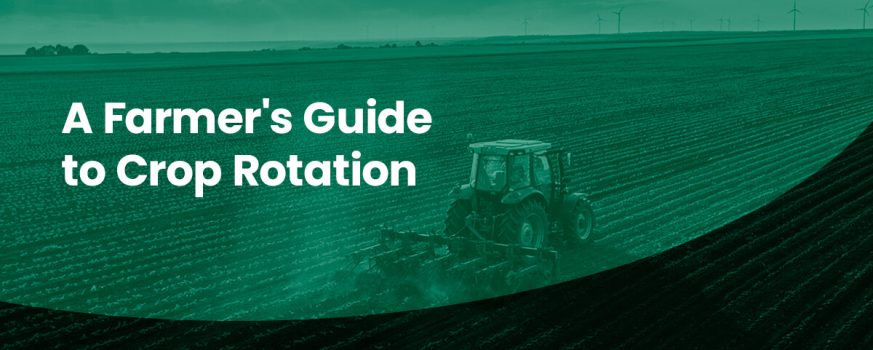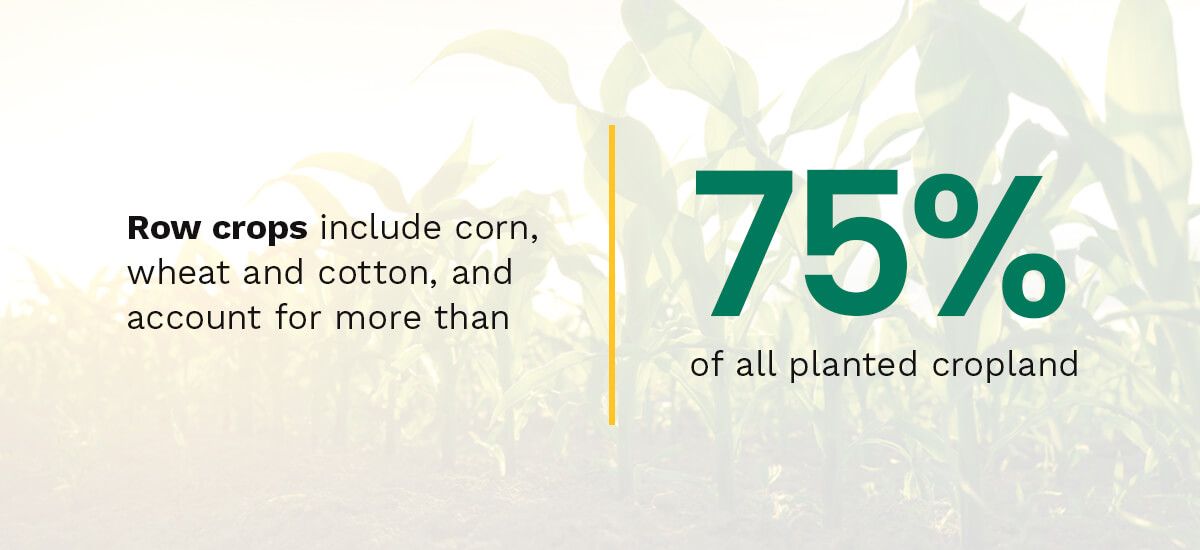
Whether it be a large-scale agricultural business or a simple vegetable garden, the first choice you have to make when you start farming is what to grow. What crops you produce can be the difference between turning a profit and going under. Your first instinct, therefore, might be to choose one or two of the most profitable crops and only grow that.
Monoculture might be more profitable in the short term, but it also leads to nutrient-stripped soil and increased risk of pests and disease. This, in turn, leads to over-reliance on chemical fertilizers and pesticides. For long-term farming sustainability, the trick is crop rotation.
Table of Contents
What is Crop Rotation and Why is it Important?
Crop rotation refers to the practice of planting different crops on the same plot of land every growing season. For example, a commercial farmer might plant peas in a field one season, then tomatoes the next. One crop rotation cycle can involve anywhere from two to twelve different crops.
There are several benefits to crop rotation. Different crops absorb different nutrients from the soil, so switching them every growing season prevents the soil from becoming overtaxed. It also lowers the chance of disease and pests. It can even lessen soil erosion, depending on the crops planted.
Understanding Crop Families
To properly utilize crop rotation, you need to have an understanding of crop families. Crops can be split into different families based on their genus. These families often share soil nutrient requirements, pest and disease vulnerabilities, and beneficial effects on the soil they’re grown in. Planting crops in the same family allows you to focus on their specific needs until they’re ready to harvest, when you can switch to a different family. Here are a few major crop families:
- Alliums: The allium family includes crops such as onions, garlic, chives, shallots and leeks. Due to the fact that many of them grow from bulbs, most allium crops require well-drained soil.
- Brassicas: Brassicas include leafy greens such as broccoli, cauliflower, cabbage, Chinese cabbage, mustard greens, collards and radishes. Plants in this group require nitrogen-rich soil and often need to be netted to avoid being destroyed by cabbage moths.
- Cucurbits: Cucurbits require nutrient-rich soil to grow. They include zucchini, cucumbers, squash, pumpkins, melons such as cantaloupe and watermelon, and gourds.
- Legumes: Legumes include green beans, soybeans, peas and even peanuts. They “fix” the soil by adding nitrogen to it while they grow.
- Nightshades: Nightshade plants — not the deadly kind, of course! — require nutrient-rich soil to thrive. They include tomatoes, potatoes, peppers and eggplant.
- Umbellifers: The Umbellifer family includes vegetables such as carrots, parsnips, fennel, parsley and dill. They prefer moist soil, and many of their members feature taproots, which are good for breaking apart dense soil.
Note that these families don’t include perennial plants. Plants that grow year-round are best kept to one spot once planted, so make sure that you’ve planted them in the optimal spot if you choose to grow them.
In addition to the named families, there are also “row crops”, named for the fact that they’re planted in dense rows. These crops include corn, wheat and cotton, and account for more than 75% of all planted cropland. These crops are often planted year after year due to their profitability, contributing to the problem crop rotation seeks to solve. If you wish to include them in your garden regardless, consider rotating them by planting according to their specific crop families.
For large-scale agricultural operations, it’s best to keep different families separate — however, for personal vegetable patches, there’s no harm in planting different families close together.
Ideal Crop Rotations
Now that you know what crop families are and what they each need, it’s time to start planning your first crop rotation cycle. You might think this just means picking your crops, but there are a few more steps you need to take before you can get to planting:
- Soil composition: Knowing which crops need what nutrients is only helpful if you know whether or not your soil has those nutrients to begin with. Test the composition of your soil so you know what crops will be able to grow there first.
- Weather: Even if the soil has the proper nutrient levels for the first crop you want to plant, it won’t grow if the weather conditions aren’t right. Make sure you know what the weather patterns are like in your area so you know what crops will flourish best.
- Seed availability: Make sure you have a ready supply of the seeds you’ll need to plant your preferred crop.
Once you know what conditions your field operates under, you can start choosing the crops for your first rotation cycle. How many crops are included in this cycle is up to you — variety is good, but make sure you don’t reach beyond your means!
Below is a hypothetical crop rotation cycle. The specifics might change depending on your area’s weather patterns, and the starting crop can change depending on your soil composition, but once established, the cycle is fairly stable:
- Legumes: For your first crop, plant a nitrogen-fixing legume such as green beans to ensure your soil is nitrogen rich. When the time comes to replant, snip them at the stems instead of pulling them up. The roots will stay in the soil and rot, providing extra nitrogen to the next crop!
- Brassicas: For your next crop, plant a member of the brassica family, who thrive in nitrogen-rich soil. Remember to have nets prepared to keep away insects!
- Umbellifers/Alliums: This next stage is more flexible, since root length is more important at this stage. Plant some carrots, garlic, or another member of the umbellifer or allium family, in order to break down the soil and allow for better nutrient absorption. If you planted radishes as your Brassica plant, these two stages can even be combined!
- Nightshades/Cucurbits: Now that the soil has been broken down and enriched, finish the growing cycle with a plant that thrives in rich soil. Pumpkins, tomatoes, or melons are all great choices, depending on the season the cycle takes place in.
- Restart: Once you’ve harvested your fourth-stage crop, you should be ready to start the crop rotation cycle over again with legumes.
No matter what choice you make for your crop rotation cycle, remember to keep a record or chart of what you’ve planted and when. Losing track of your cycle could lead to you planting out of order, which could decrease the health and fertility of the soil.
Plan Crop Rotation Cycles to Optimize Your Harvest
Crop rotation is an important aspect of healthy, sustainable farming. Cycling through different crops each growing season helps replenish nutrients in the soil, discourages pests and diseases, and cuts down on fertilizer use. By implementing crop rotation, you’re ensuring that you use your field space efficiently, as well as reducing how much you spend on chemical fertilizers and pesticides. Plan your first crop rotation cycle and optimize your harvest!




